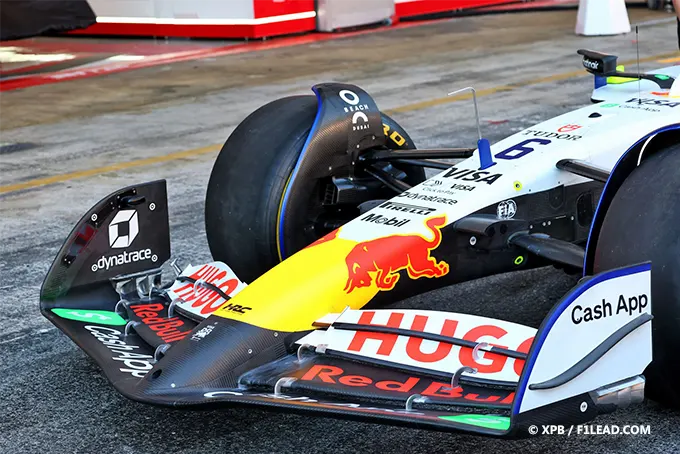The FIA’s tighter front wing flex rules divide opinion, with Mercedes warning of shifts while McLaren and Williams downplay the impact.
Carlos Sainz believes the impact of the FIA’s restriction on flexible front wings on the relative performance of Formula 1 teams will be minimal.
Starting from this weekend’s Spanish Grand Prix, all cars will be subject to more rigorous static load tests on front wing flexing, as the FIA aims to close the debate surrounding aeroelasticity in F1.
All teams are expected to debut new front wings in Barcelona to ensure their cars comply with the updated regulation, marking a decisive turning point for the 2025 season.
There has been widespread speculation about how this change might affect the running order, with Sainz’s team principal, James Vowles, stating that the top teams might be most affected by the restriction.
Sainz Minimizes Wing Impact
However, Sainz dismissed suggestions that the restriction on flexible wings would lead to major shifts in the hierarchy, arguing that its impact has been overstated.
“There has obviously been a lot of talk about it,” the Williams driver said today. “I don’t think it will affect the teams and drivers as much as some think or tend to believe about this regulation change.”
“It’s still a front wing. Of course, it will be a bit stiffer and won’t flex as much as before.”
“I don’t expect a variation of more than a tenth of a second in the field, depending on whether it flexes or not. I don’t think it’s that significant.”
When it was pointed out that a tenth of a second can make a difference of up to four places in qualifying, he replied, “That’s true, especially in our midfield pack.”
“We have many tools now, both mechanical and aerodynamic, to set up these cars. Even if it becomes more difficult, we still have three free practice sessions to assess the car’s level in FP1 and fine-tune the setup to find our ideal position.”
“You can imagine that the simulator teams have done countless laps with the new wings. These days, F1 teams are too well prepared not to counter this kind of change.”
Impact of Flexibility Debate
Asked about McLaren’s concerns over the new flex rule, Monaco Grand Prix winner Lando Norris replied, “No, absolutely none.”
“There are a few adjustments here and there. But no, nothing that will change how we operate.”
But not everyone agrees. Mercedes F1 believes the revised technical regulation could have an impact.
Team representative Bradley Lord aligns with Ferrari director Fred Vasseur, who suggested that the new regulation could be a “game-changer.”
“Every team has had to make some level of modifications,” Lord said.
“What’s unknown is not the effect on our own car, for example—which we can simulate and believe we understand well—but its relative impact across the field.”
“So this will be a topic of interest for the media and observers, to see whether it affects relative competitiveness.”
“From an external point of view, the changes to the flex tests seem minimal, with the FIA’s tightening of the rules representing just a five-millimeter difference.”
Margins That Define Performance
“Such small margins, however, can significantly affect the cars: the more the wing flexes, the less drag on the straights and the more aerodynamic load in corners.”
“It’s not so much about absolute performance, but relative performance. And have some teams benefited more than others? We’ll only find out on Friday, and especially during qualifying and the races on Saturday and Sunday.”
“So yes, it could have an impact—teams wouldn’t be doing it if it didn’t improve performance, and they wouldn’t stop doing it unless it hurt performance.”
“And I think it’s fair to say that no team would choose to run the wing as we’re doing from Spain onwards, unless it were mandated by technical directives. So we don’t know yet—that’s an honest answer.”
“We can expect it to make a difference, and make the car a bit trickier to balance—between optimal low-speed balance for tight corners and moderate instability in high-speed turns.”
“But what the relative impact will be—only the weekend will tell.”

- Discover More>Alonso unsure about extending contract with Aston Martin F1
- Following us on>Facebook et Twitter
